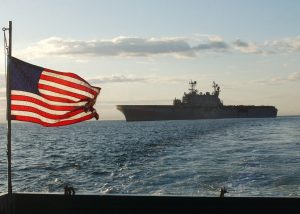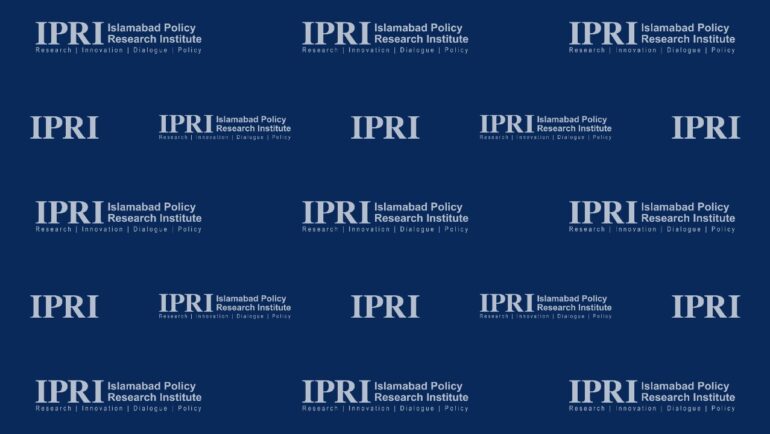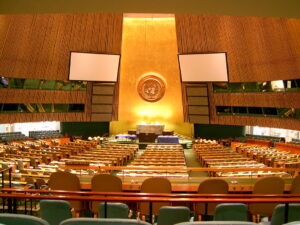Newspaper Article 26/11/2015
Asia Pacific’s strategic significance coupled with the region’s economic progress has raised the region’s stature for regional as well as global players. Hillary Clinton at the East West Centre, Honolulu described the pivot strategy as: “It is becoming increasingly clear that in the 21st century, the world’s strategic and economic centre of gravity will be Asia Pacific, from the Indian subcontinent to the Western shores of the Americas. And one of the most important tasks of American statecraft over the next decades will be to lock in a substantially increased investment – diplomatic, economic, strategic – in this region”. The Malacca is the world’s busiest shipping lane, as many as 50,000 commercial vessels pass through it yearly. Over 80 percent of oil and gas for China, Japan, Taiwan and South Korea is also navigated through the Strait. Economically, the region as a whole is flourishing. Three of the important Straits – Malacca, Sunda and Lombok are located in the region. President Barack Obama while addressing the Australian Parliament stated: “As the world’s fastest-growing region and home to more than half the global economy – the Asia Pacific is critical to achieving my highest priority … As President, I have, therefore, made a deliberate and strategic decision – as a Pacific nation, the US will play a larger and long-term role in shaping this region and its future, by upholding core principles and close partnership with our allies and friends”.
Oceanic states – Australia and New Zealand have high economic growth. Northeast Asian countries – China, Japan and South Korea are the leading economies of the world. Similarly, Southeast Asia is well integrated economically; region’s economic vehicle Association of Southeast Asian Nations (ASEAN) is progressing well. US is a Full Dialogue Partner (FDP) of ASEAN (US-ASEAN trade US $ 206 billion). The other cooperative mechanisms of the US with ASEAN include ARF (ASEAN Regional Forum), ASEAN Defence Ministers Meeting (ADMM) and Expanded Economic Engagement (E3). The US has also launched the Trans-Pacific Partnership (TPP) agreement, under which the US is negotiating with Pacific nations of Australia, New Zealand, Peru, Chile, Canada, Mexico, Japan, Brunei Darussalam, Malaysia, Singapore, and Vietnam. On the defence, the US has been stepping up its military ties with the regional allies – Japan, South Korea, Australia, New Zealand and the ASEAN states. The US has also been an active participant in the Shangri-La-Dialogue and ASEAN Defence Ministers Meetings. US plans to shift 60 percent of its naval assets to the region by 2020 (Leon Panetta, Defence Secretary speech at Shangri-La-Dialogue – June 2012). The US has inked defence agreements with Vietnam over maritime security/cooperation. The US–Indonesia Defence Comprehensive Partnership has been formalized. Besides, the US has also established a Military Base at Darwin, Australia.
India’s “Act East Policy” and the US “Re-balancing” are in connivance with each other. Both are targeted at a potential challenger, a rapidly rising China. US Defence Secretary, Leon Panetta said: “Defence cooperation with India is a linchpin in US new Asia Pacific strategy”. India-US strategic partnership, maritime cooperation in the Indian Ocean region – including the Strait of Malacca and the sea lanes in the South China Sea are to downplay China’s influence. China is skeptical of US ingress in the region, China considers the US interference in the South China Sea as unnecessary internationalization of the issue. China prefers to address the issue bilaterally with the respective countries. China has employed Anti-Access Anti-Denial (A2D) strategy to deter the US from entering the island chain in the area of Chinese influence.
The perception that the wars in Iraq and Afghanistan have curtailed terrorism, and the US could shift the focus towards Asia Pacific could turn out to be a miscalculation. In view of the IS presence in the Middle East (and Afghan situation), terrorism has not been eradicated. Another emerging challenge for the region could be a US-China “action-reaction” dynamic. The challenge for the US is to provide strategic reassurance to allies and other regional players without provoking a strategic backlash from China. China through economic engagement is trying to link Asia with other regions. The ‘Silk Road Economic Belt’ the ‘Maritime Silk Route’ (often termed as the One Belt One Road – OBOR) would physically connect the markets of Middle East, Europe and the mega-cities of East Asia. The China-Pakistan Economic Corridor (CPEC), linking Gwadar to China’s Western city of Kashgar is also a part of OBOR. Pakistan lies in an area through which China’s vision passes. Thus, Pakistan must develop CPEC, and reap the benefits of regional connectivity.
Amna Ejaz Rafi
Researcher, Islamabad Policy Research Institute (IPRI)
Disclaimer: Views expressed are of the writer and are not necessary reflective of IPRI policy.



